Charger Soshine H2 V2
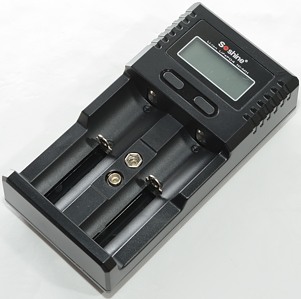
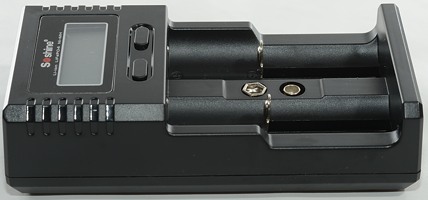
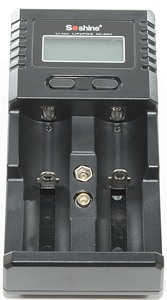
Soshine sells mainly batteries and chargers for both batteries and usb. This charger is an updated version of the H2, that showed a couple of problems during my review. The charger has two channels, is multichemistry and can also charge 9 volt PP3 batteries.
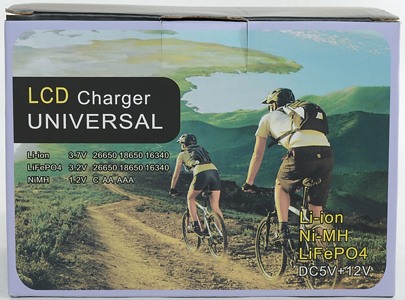

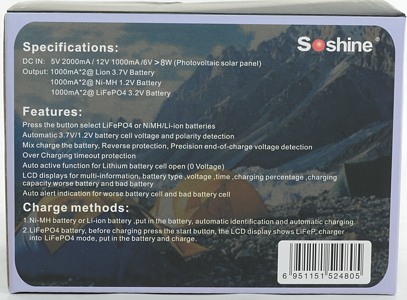
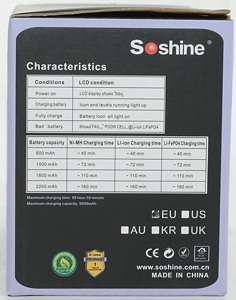
The charger comes in a cardboard box with the manual printed on the outside. The box I got is not updated with the V2 charger specification.
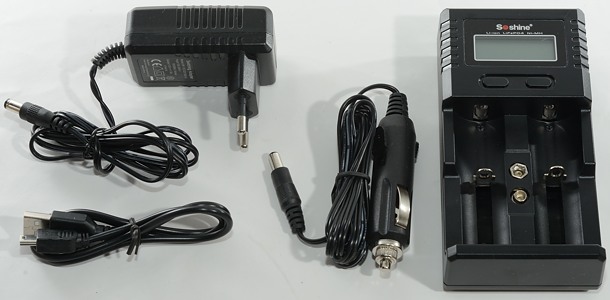
Inside the box is the charger, a power supply and a car power adapter.
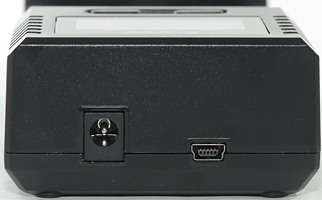
The charger has two input connectors. A DC jack for 12 volt supply and a mini usb for 5 volt. According to the specifications it can also work on 6 volt from a solar panel, but it does not say what connector to use.
The usb input requires rather high current, limiting what can be used for a supply.
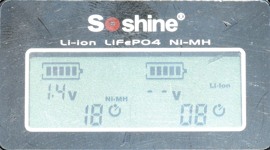
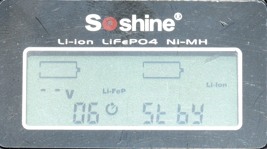
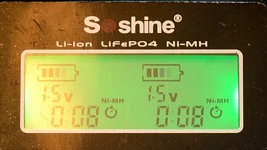
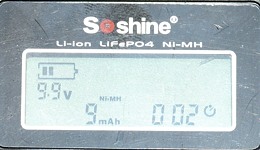
The display can show battery voltage, percent, charge time, charge capacity, battery chemistry and status "stby", "full", "fail", "Ion" and "FEP".
The display will also report bad batteries.
When charging round batteries the display shows status for each slot on each half of the display, but with the 9V battery there is only one slot and the full display is used to show the status.

Below the display is two buttons, one for each channel. Without a battery in the charger they change between LiIon and LiFePO4 chemistry. With a battery in the charger they are used to change between the different values that can be display.
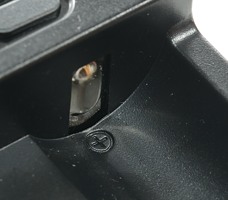
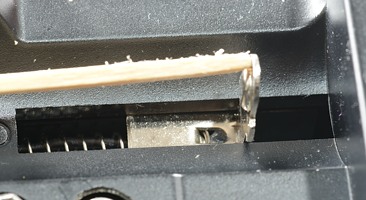
The charger uses the classis battery holder with a slider. It only has plastic tracks, but they work very smooth.
Batteries from 31 mm to 72.3 mm fits in the charger.
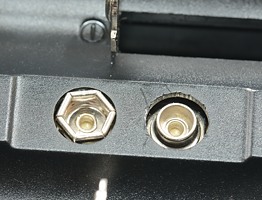
It does also have a connector for a 9V PP3 battery.


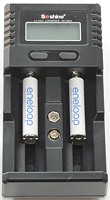

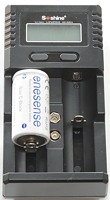

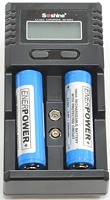
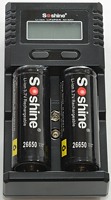

The charger can handle 70 mm long batteries including flat top cells.
Due to the "high" charge current, small LiIon batteries cannot be charged in it.
Measurements
- With a 0 volt battery the charger is charging with about 2mA (This will reset a protection) while reporting standby mode.
- The charger wakes at about 0.55 volt and starts testing with a low current (6mA).
- Above 0.9 volt the charger will start charing with 0.5A.
- Between 2.1 volt and 2.5 volt it will fail a battery after initial test.
- Above 2.3 volt the charger will charge with 0.3A
- The voltmeter is within about +/-0.1 volt when in range.
- Power cycling and reinsertion of the battery will restart charging.
- The charger remember LiIon/LiFePO4 selection, even when powered off.
LiIon batteries
- When power is disconnected it discharges with 6mA from a LiIon battery
- Above 3.1 volt the charger will switch to full LiIon charge current.
- LiIon voltmeter can show 3.2 volt as lower value and 4.2 volt as maximum value.
- If the voltage drops to 4.15, the charge will restart, but the display will still show "FULL".
To charger these batteries the button must be pressed until the display shows "Li-ion" and "Ion", before the battery is put into the charger.
%20%231.png)
The charger uses pulses, probably to measure the voltage with the current turned off. The charge curve is a nicely simulated CC/CV curve, with an acceptable termination current.
When finished the display showed: 4:08 3046mAh, i.e. 248 minutes.
It looks like the measured time is too short.
%20%232.png)
Same on second channel.
When finished the display showed: 4:09 2907mAh, i.e. 249 minutes.
%20%231.png)
%20%231.png)
Other capacities does also work fine.
%20%231.png)
The 18350 did also charge fine, but the charger did give me a warning about a "poor battery".
%20%231.png)
The old 16340 cell did also get a "poor battery" warning (That was no surprise). Because the restart level is very high, the charger did restart all the time.
.png)
There is no problem with two batteries at a time.
.png)
Current consumption on 12 volt power is about 0.7A average.
.png)
When charging from usb input the charger uses around 1.6A average.
a.png)
The charger cannot keep the charge current constant with usb power, but the charge curve is perfectly fine, it just takes longer to charge the battery.
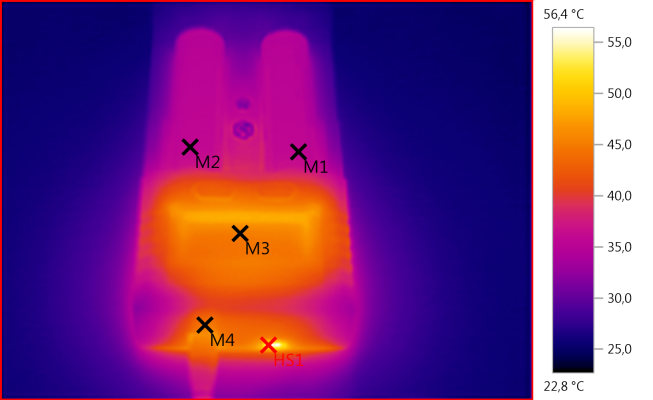
M1: 35,9°C, M2: 36,0°C, M3: 45,1°C, M4: 44,7°C, HS1: 56,4°C
As usual the heat is generated on the circuit board and any metal that has direct contact to it gets hot, like a usb connector.
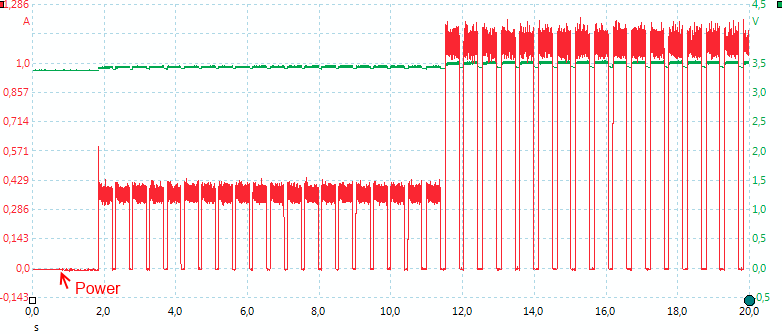
When turned on the charger first start with 10 second charging at low current, probably used to detect the battery type, then it switches to full current.
LiFePO4 batteries
- When power is disconnected it discharges with 6mA from a LiFePO4 battery.
- Above 2.6 volt the charger will switch to full LiFePO4 charge current.
- LiFePO4 voltmeter can show 2.9 volt as lower value and 3.6 volt as maximum value.
- If the voltage drops, the charge will restart, but the display will still show "FULL", because the restart limit is to high the charge will never stop charging.
To charger these batteries the button must be pressed until the display shows "Li-FeP" and "FEP", before the battery is put into the charger.
%20%231.png)
The charger charges to 3.6 volt as it is supposed to do, but the current is not turned off, probably because the restart level is high (LiFePO4 will often drop to 3.4 volt when charging is stopped).
As long as the battery is removed soon after it is finished it is acceptable.
NiMH batteries
- When power is disconnected it discharges with 1.6mA from a NiMH battery
- After 20 minutes it will switch to full current for NiMH.
- NiMH voltmeter can show 0.4 volt as lower value and has no maximum before the charger fails the battery.
%20%231.png)
The charger uses a maximum voltage termination and a trickle charge after that. The termination is slightly early for eneloops (No temperature raise is seen), but that might be necessary for other brands of NiMH batteries.
Also note that the charger starts with a low charge current for the first 20 minutes, before it charges at full speed.
When finished the display showed: 2:09 1722mAh.
%20%232.png)
The second channels works the same way, I let it run for a couple of hours extra to see if the trickle charge would change, as can be seen it did not.
When finished the display showed: 2:10 1777mAh.
%20%231.png)
The eneloop XX works just as well.
When finished the display showed: 2:48 2241mAh.
%20%231.png)
Same with the AAA cell.
.png)
Charging two batteries at once, will heat the charger a bit more (That is no surprise), but it works just as fine as one battery.
.png)
The average current from 12 volt is about 0.42A
.png)
Using the usb input the input current is obscuring everything else. The average input current is about 1A.
a.png)
Removing the input current form the above chart it can be seen that the charge curve is about the same as for 12V.
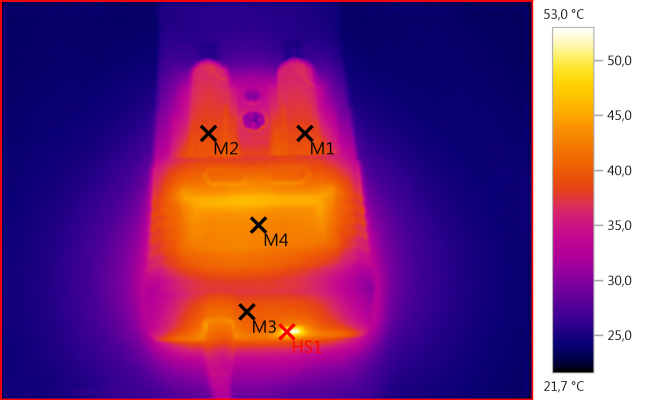
M1: 38,5°C, M2: 38,9°C, M3: 40,0°C, M4: 43,0°C, HS1: 53,0°C
The charger is slightly cooler charging NiMH than LiIon, but the batteries is slightly warmer (Probably because they are smaller).
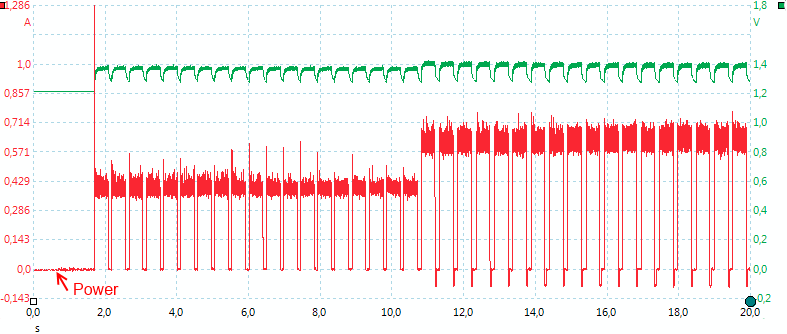
Startup for NiMH looks like LiIon, except the voltage is at NiMH level.
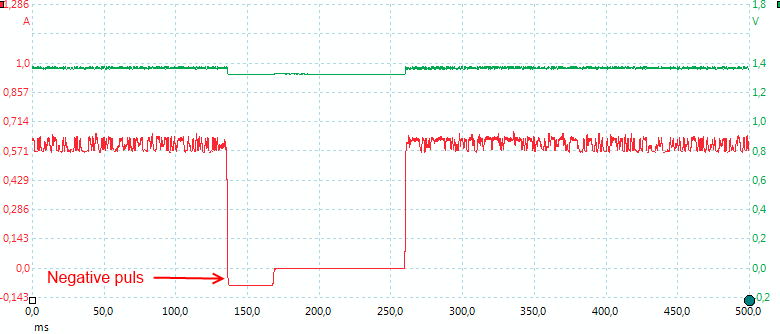
An interesting detail while charging is the negative pulse. It is probably based on "Burp" Charging ideas, that some people says are good, other that it does not help anything. But the negative pulse is way to week to be real "Burp" Charging.
9V batteries
- Charging 9V cell will first show LiIon, but will change to NiMH after some time (If the battery is NiMH).
- When power is disconnected it discharges with up to 7mA from a 9V battery.
- Cannot charger 9V from usb power input, shows "pwr fail" on display.
- The charger is rated for 7 cell NiMH battery, i.e. 8.4 volt battery.
- The charger is rated for 2 cell LiIon battery, i.e. 7.4 volt battery.
.png)
A NiMH is charged with 300mAh and there is trickle charge when it is finished. The cell I used was a 7 cell NiMH battery, i.e. 8.4 volt and it worked fine.
When finished the display showed: 0:43 228mAh.
.png)
A LiIon 9 volt battery is charged with 500mA and about 30mA termination current, this looks good.
When finished the display showed: 1:26 581mAh.
.png)
The 9V charger does not work on usb input, only the 12 volt input can be used.
Testing with 2500 volt and 5000 volt between mains and low volt side, did not show any safety problems.
Conclusion
The V2 of this charger has been much improved, but it not perfect yet.
LiIon: Works fine.
LiFePO4: Does not terminate, the batteries must be removed when charging is finished.
NiMH: Does not fill the batteries completely.
9V NiMH: Probably works fine.
9V LiIon: Works fine.
The display is nice for keeping track of the battery capacity. Because it measures during charge it will not show the exact capacity and the value will also depend on how discharged the batteri was.
For a universal charger it does a fairly good job, with support for many types of batteries, but it is not perfect for LiFePO4 or NiMH batteries.
Notes
The charge was supplied by Soshine for review.
Here is an explanation on how I did the above charge curves: How do I test a charger


























%20%231.png)
%20%232.png)
%20%231.png)
%20%231.png)
%20%231.png)
%20%231.png)
.png)
.png)
.png)
a.png)


%20%231.png)
%20%231.png)
%20%232.png)
%20%231.png)
%20%231.png)
.png)
.png)
.png)
a.png)



.png)
.png)
.png)